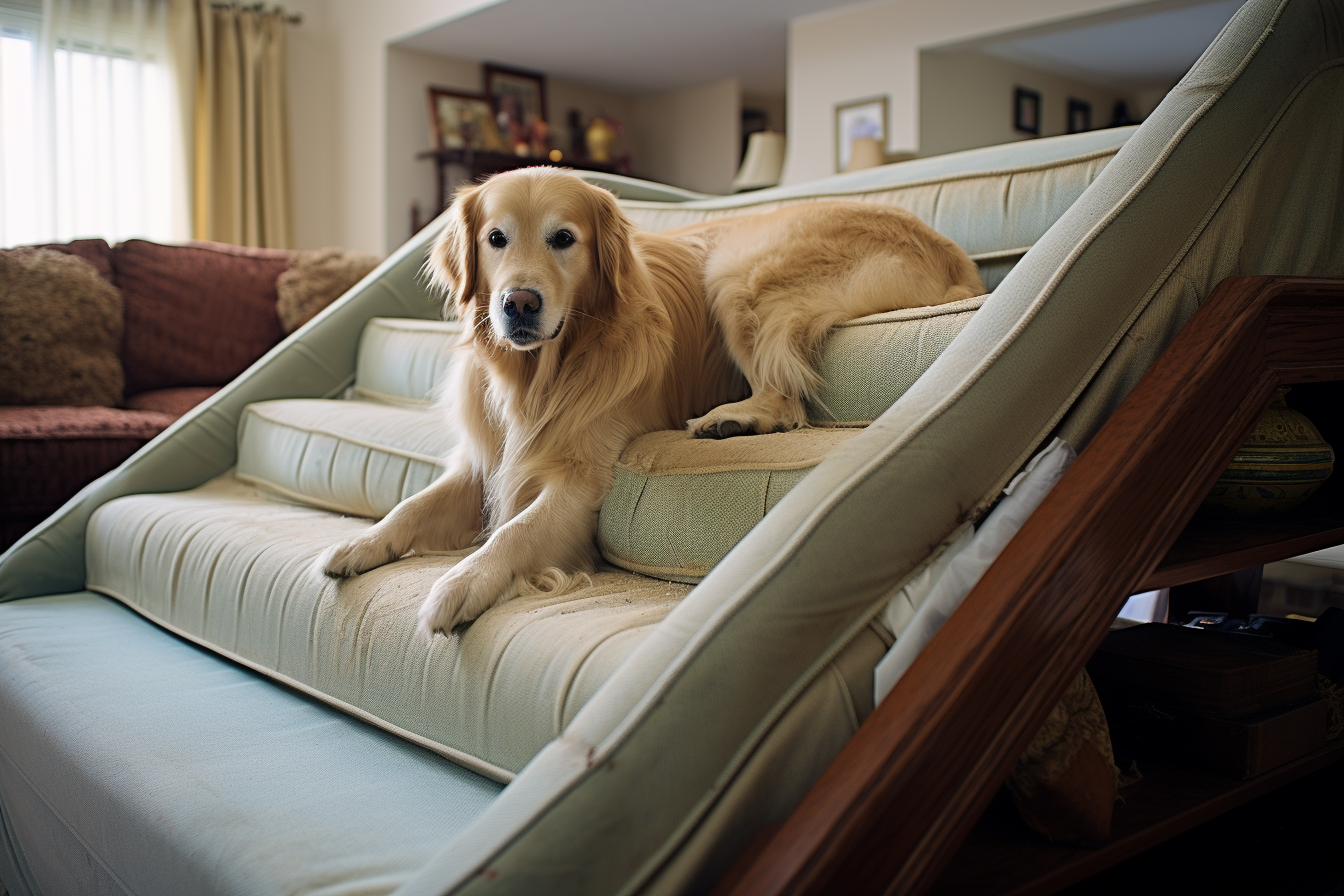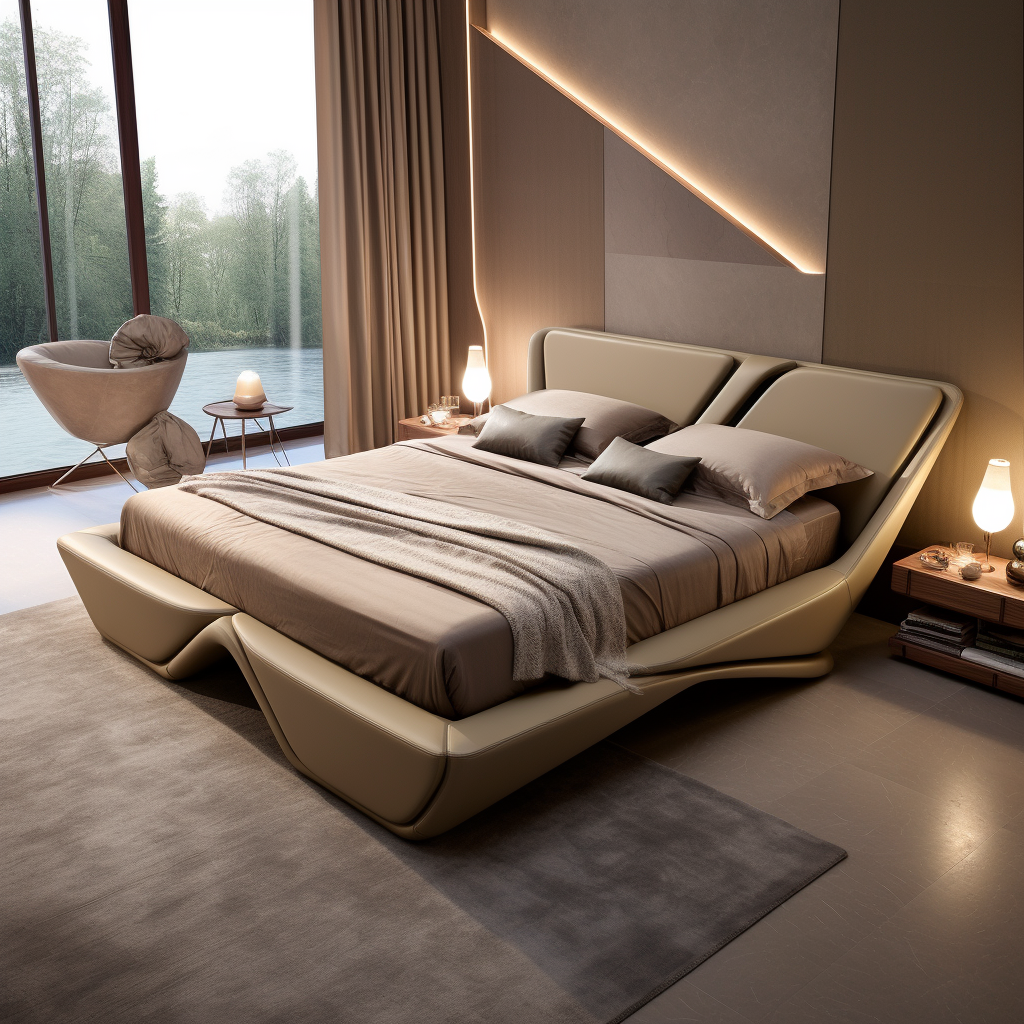Dealing with a noisy roommate can turn your home into a disruptive environment that prevents quality sleep. Trying to sleep while they watch loud TV, take late phone calls, or slam doors is frustrating. With some creative solutions, you can block noises to finally get the undisturbed rest you need.
This guide covers techniques to soundproof your room, mask disruptive noises, and reduce noise production through communication. You’ll also find tips for buying quieter home products, optimizing white noise, and adapting your schedule to get respite. Follow these tips to regain peaceful slumber despite noisy roommates.
Table of Contents
ToggleUnderstanding Noise Disruption
To solve the issue, it helps to first understand what happens when noise interrupts sleep:
- Disruptive sounds prevent you from falling asleep quickly.
- Noises can awaken you from vital stages of deep restorative sleep.
- Frequent waking makes it hard to get sufficient sleep cycles.
- Lack of quality sleep causes daytime exhaustion and affects focus and performance.
- Ongoing poor sleep leads to moodiness, irritability and health problems over time.
Blocking noises allows you to get the sustained, uninterrupted sleep your mind and body require.
Tips for Blocking Out Roommate Noises
There are two main approaches to reducing noise disruption – physically blocking sound transmission and masking annoying noises. Follow these tips:
Physically Block Noise
- Add insulation like seals, panels and weatherstripping
- Install thick curtains over windows
- Seal entryways with draft stoppers and door sweeps
- Choose quieter electronics and appliances
Mask Bothersome Noises
- Use white noise from a machine, fan or app
- Play ambient background sounds
- Wear noise-blocking headphones or earplugs
- Run an air purifier for soothing fan noise
Combining several approaches works best to cover noises that keep you from sleeping peacefully.
How to Soundproof Your Bedroom
Cut down on noise traveling into your private sleeping space by soundproofing your room. Useful techniques include:
Add Insulation
Extra insulation in walls muffles noise intrusion. Use soundproofing insulation like mass loaded vinyl, acoustical caulk and sealants.
Install Storm Windows
Interior storm windows create an extra noise buffering layer and air pocket. Attach clear acrylic panels for unobstructed light.
Seal Gaps
Fill any spaces around your room’s trim, baseboards, electrical outlets and vents to prevent noise leakage using acoustic caulk and weatherstripping.
Add Rugs and Textiles
Use wall hangings, soft furnishings and area rugs to absorb rather than reflect ambient sounds.
Upgrade Door
Add door sweeps and seals for the threshold and sides. Solid wood blocks noise better than hollow. Or install a thicker second sliding door.
With some strategic upgrades, you can greatly reduce the noise coming into your sleep environment.
Best Noise-Blocking Window Solutions
Windows tend to be a major source of noise intrusion. Try these window remedies:
Soundproof Curtains
Special quilted audio curtains with noise damping interlining add mass to block noise. Blackout curtains also work well.
Acoustic Film
Adhesive noise damping window film creates an extra buffering membrane to reduce noise by up to 20 decibels.
Seal Perimeter Gaps
Fill gaps around frames with acoustic caulk and weatherstripping to prevent sound leakage.
Secondary Glazing Panels
Installing a secondary interior pane creates an insulating air gap. Laminated glass with a soundproofing interlayer works best.
Replace Windows
As a last resort, replacing single pane windows with well-insulated, airtight new windows significantly cuts noise.
Upgrading windows pays off by creating effective barriers against unwanted noise.
Creating a White Noise Sound Barrier
Generating steady, unobtrusive background noise with white noise machines helps mask intermittent disruptive noises. Consider these options:
White Noise Machines
These devices produce ambient sound like rainfall, ocean waves, humming fans or static to lull you to sleep.
Box Fans and Air Purifiers
These add soothing, constant white noise that can override erratic noises.
Apps and Music
Free apps like Rain Rain, websites like SimplyNoise or streaming white noise music blocks disturbances.
Noise-Cancelling Headphones
Wearing headphones playing steady white noise cuts out unwanted sounds and distractions.
Experiment with different white noise options to find the most effective masking noise to overcome roommate sounds.
Buying Noise-Reducing Bedroom Products
Look for these features when buying bedroom items to prevent excess noise:
Mattresses – Pocket Coils, Foam Density
Innerspring mattresses with individually wrapped coils or dense, heavy memory foam absorb more motion transfer and noise.
Bed Frame – Solid Wood, Metal
Solid wood or metal frames without squeaks and motion transfer are best for reducing noise.
Headboard – Upholstered
Upholstered cushioned headboards absorb sound better than solid wood headboards which can amplify noises.
Lighting – Wall Sconces
Wall sconces eliminate buzzing overhead fixtures. Use a remote dimmer switch to control lights from bed.
Ceiling Fan – Rubber Mounts
Fans specially mounted to prevent transfer of motor vibrations to the ceiling are quieter.
Making upgrades when possible ensures your sleep environment stays peaceful and muted.
Best Ear Plugs for Blocking Noise
Wearing earplugs is an easy way to instantly dampen unwanted noises:
- Foam earplugs mold to the contours of the ear canal comfortably. Disposable.
- Silicone or wax earplugs also mold closely while reusable.
- Flanged earplugs have tapered cones to gently flex open the canal. Less pressure.
- Corded earplugs connect with a strap to prevent losing and make removal easier.
- Noise reduction rating (NRR) indicates effectiveness in decibels, from 20 to 33 dB noise reduction.
Test different earplug materials and sizes for the most comfortable and secure fit.
Best White Noise Apps
Specialized apps offering a library of ambient sounds can serve as affordable noise masking:
White Noise Lite – Simple app with 40+ sounds from rain to waves to fans. Custom mix and timer options. Free.
Rain Rain – Soothing rainstorm sounds with sleep timers and adjustable volume. Contains other nature sounds too. Has free and premium options.
Noisli – Provides a range of white, brown and pink masking noise along with nature sounds. Customizable and free.
SleepyFan – Realistic fan sounds in over 50 styles including ocean waves and birds. Free with paid upgrades.
Dark Noise – Features unique ambient sounds like spaceship drones along with white and brown noise. Free.
Experiment with noise-blocking apps to find your ideal mix of masking sounds for overcoming roommate ruckus.
Strategic Bed Placement and Layout
Arrange your bedroom furniture strategically to reduce noise:
- Avoid sharing walls – Keep your bed along the quietest wall farthest from doorways.
- Add distance – Place bed away from windows and doors which transmit noise.
- Insulate walls – Use mirrors, tapestries, and sound dampening panels.
- Seal entryways – Close any gaps where noise leaks in around doors with stoppers.
- Cover windows – Hang blackout curtains and install insulated window panels.
Sometimes simple furniture rearrangement making small improvements to the space can make a difference in noise reduction.
Communication Tips for Quieter Shared Living
Beyond physical measures, communicating with roommates establishes good habits for peaceful coexistence:
- Share schedules – Knowing each other’s routines helps avoid unnecessary disruptions during study or sleep times.
- Agree on quiet hours – Compromise on maintaining general quiet in evenings or overnight to allow restful sleep.
- Take turns – Rotate late night kitchen or TV usage so the same person isn’t always disrupted.
- Use shared spaces – Suggest noisy activities like video games happen in living rooms, not bedrooms next to yours.
- Use headphones – Recommend using headphones for loud music, calls or TV instead of speakers.
- Be understanding – Try to compromise and let some occasional noise slide rather than nitpicking every disruption.
With respectful communication, you can find a noise balance that works so everyone gets the downtime they need.
Optimizing Your Bedroom for Sleep
Make your room as conducive to quality rest as possible:
- Maintain darkness using blackout shades. Light disruption is another sleep saboteur.
- Keep the temperature between 60-75°F for best sleeping conditions. Too hot or cold affects sleep latency and quality.
- Limit electronics like TVs and computers in your sleep environment that negatively impact sleep cycles.
- Use comfortable earplugs, eye masks and bedding to create a relaxing sleep haven.
- Consider white noise machines to establish constant ambient background noise.
- Keep the room clean, tidy and soothing to promote rapid sleep onset.
Your sleep environment should look and feel like a sanctuary devoted to deep restorative slumber.
Adapting Your Schedule Strategically
If noise remains disruptive at night, creatively adapt your schedule to still get enough quality rest:
- Switch to daytime napping if the apartment is quieter then.
- Nap at the library between classes.
- Go to bed earlier to gain an extra sleep cycle before noise starts.
- Study or read in bed earlier, then put on earplugs at your target sleep time to block noise.
- Wake up before everyone else when they are still asleep.
Look at your daily schedule and find pockets of time where you can sneak in naps and extra sleep around noisy periods.
Medical Coping Tips for Noisy Environments
Those struggling with ongoing lost sleep should also discuss these options with a doctor:
- Ask about prescription-strength white noise devices to better mask sounds.
- Some medications aid sleep even with disturbances. Consider options carefully.
- Wear hearing aids programmed for noise reduction at night. Features like Sleep Mode reduce distractions.
- Discuss sound therapy and cognitive behavioral techniques to retrain your ability to sleep through noise.
- Assess any associated anxiety or stress making noise disruption worse.
Your physician may have additional recommendations beyond what you can try at home for stubborn noise issues.
When to Seek New Housing
If you have exhausted all remedies and disruptive shared living is significantly harming your ability to function and affecting your physical and mental health, you may need to consider moving. Signs it’s time include:
- Ongoing sleep deprivation with associated mood changes, exhaustion, lack of concentration, etc.
- Your health and school performance are measurably declining.
- You dread going home to try to rest.
- Sympathetic roommates make efforts to reduce noise but an inconsiderate roommate refuses to compromise.
- Shared housing is impacting your physical or mental well-being.
Don’t jeopardize your health or grades if all attempts at mitigation fail. Prioritize your rest.
Creating a Relaxing Move-In Routine
When getting ready to move in with new roommates, set the stage for considerate shared living habits:
- Have an upfront conversation about everyone’s schedules, sleep and noise considerations, and any health concerns.
- Agree on “quiet hours” suited to your schedules and noise rules.
- Swap phone numbers to easily text if unavoidable noisy circumstances arise like emergency plumbing repairs etc.
- Share preferred temperatures and affordable ways to soundproof individual bedrooms.
- Buy communal items like rugs, fans or a white noise maker to help block noise.
With some advance planning, you can organize quiet shared living from the start.
FAQs About Coping With Noisy Roommates
How do you ignore roommate noise?
Using white noise from a sound machine, air filter or app helps mask sporadic noises. Wear earplugs rated for higher noise reduction. Soundproof your bedroom by sealing gaps under the door and around windows, hanging curtains, and using noise dampening materials.
What should you not do with noisy roommates?
Avoid retaliation methods that create more tension like blasting your own music, slamming doors or demanding complete silence. Passive aggressive notes tend to escalate issues. Have respectful conversations during normal hours instead about compromising and creating quieter routines.
How do you ask a roommate to be quieter?
Have a friendly conversation emphasizing how you want to be considerate of each other’s sleep and downtime. Suggest compromises like using headphones, walking softly at night, or keeping rowdy gatherings to shared living spaces, not bedrooms. Offer to return the favor during their sleep times.
What should you not say to noisy neighbors?
Avoid aggressive, insulting or threatening language. State concerns politely versus attacking the person. Explain how the noise impacts your sleep and see if they’re open to compromise. If no improvement, involve apartment management.
How much noise should you tolerate from neighbors?
The occasional late night or TV noise should be tolerated. But consistent excessive noise like music shaking your walls or voices at high volumes very late merits a polite discussion. Document dates and times in case formal complaints become necessary.
The Bottom Line
Finding solutions to room with noisy roommates requires persistence and creativity. Blocking or covering bothersome sounds through upgrades, communicating compromises, and optimizing your sleep space are most effective. With some thoughtful mitigation using the tips above, you can create a reasonably tranquil environment, block disruptions, and train yourself to rest through remaining ambient noises. Don’t despair – with the right combination of changes, peaceful slumber is possible even with a noisy roommate.
Originally posted on September 19, 2023 @ 9:20 pm
Author
-

Dr. Barry Jarvis is a renowned sleep specialist, dedicating their illustrious career to the intricate world of sleep medicine. Holding a medical degree from a prestigious institution, Dr. Jarvis has cultivated a deep understanding of the complex mechanisms that govern sleep and its pivotal role in overall health and well-being. With a compassionate approach and a meticulous eye for detail, Dr. Jarvis has helped countless individuals reclaim restful nights and vibrant days. Beyond their clinical expertise, they have contributed to groundbreaking research in sleep medicine, unraveling the mysteries of sleep disorders and pioneering innovative treatments that stand at the forefront of the field.
Tags: NoiseNoisy Roommates
Dr. Barry Jarvis
Dr. Barry Jarvis is a renowned sleep specialist, dedicating their illustrious career to the intricate world of sleep medicine. Holding a medical degree from a prestigious institution, Dr. Jarvis has cultivated a deep understanding of the complex mechanisms that govern sleep and its pivotal role in overall health and well-being. With a compassionate approach and a meticulous eye for detail, Dr. Jarvis has helped countless individuals reclaim restful nights and vibrant days. Beyond their clinical expertise, they have contributed to groundbreaking research in sleep medicine, unraveling the mysteries of sleep disorders and pioneering innovative treatments that stand at the forefront of the field.









